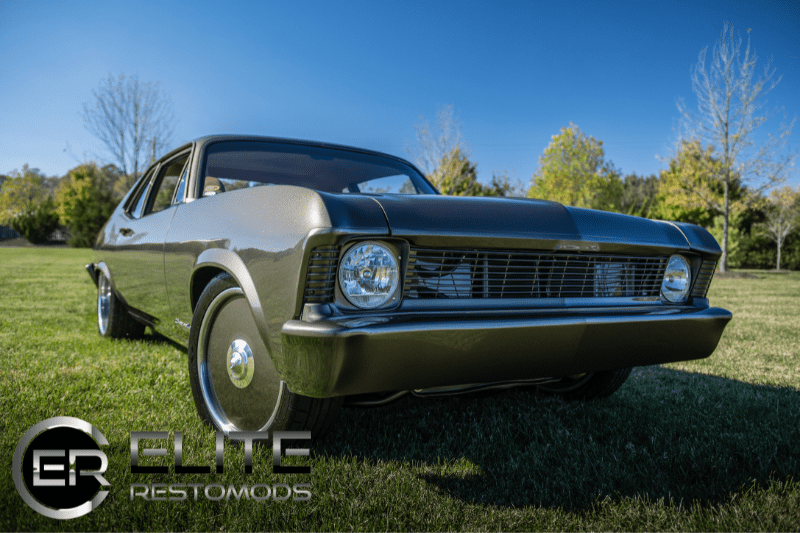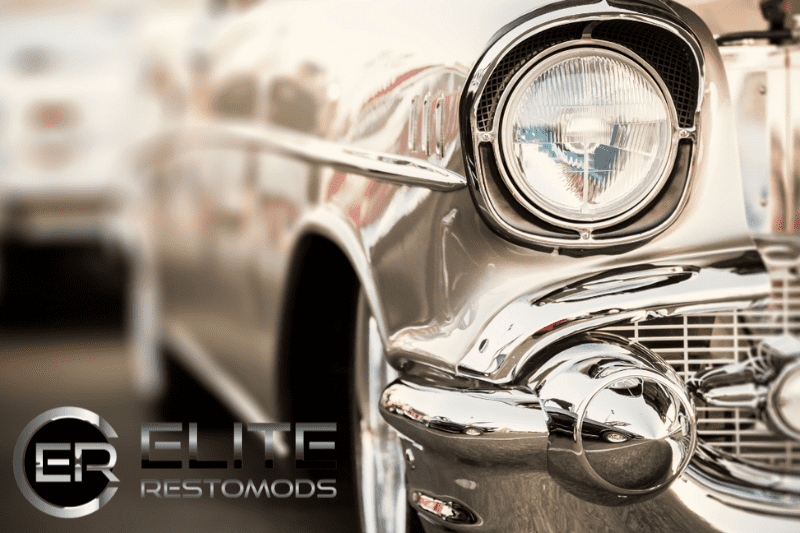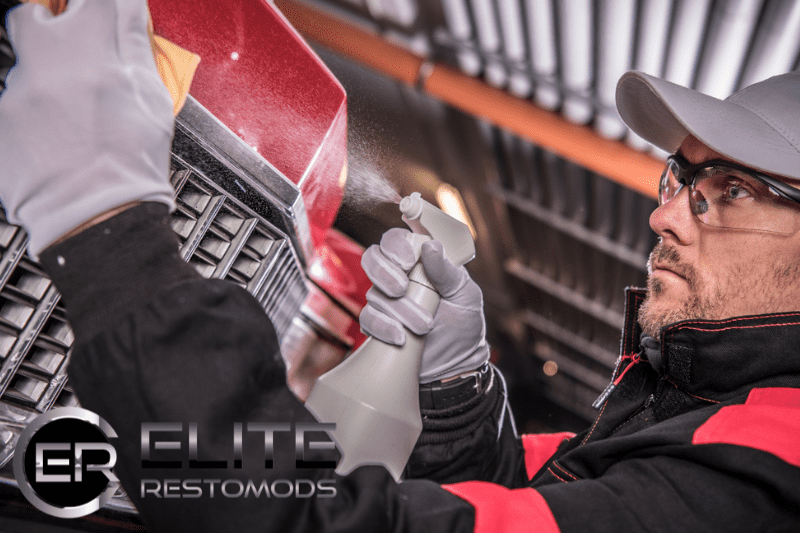Classic cars symbolize a time when driving was more than just a means of transportation. They were built with style, elegance, and craftsmanship that set them apart from their modern counterparts. These cars are more than just automobiles; they are rolling pieces of history that tell a story of a different era. But what exactly are classic cars, and why do people love them? This article will explore the world of classic cars and the reasons behind their enduring appeal.

Classics are automobiles that were produced between 1919 and 1990. They are recognized for their historical significance, cultural importance, and aesthetic appeal. Classics are different from vintage ones, typically older and rarer. While there is no definitive definition of a classic car, most people consider cars 25 years or older classics.
These cars are often collectible and can be worth substantial money. Classics are often admired for their unique designs, high-quality craftsmanship, and the stories they tell about a different era in the history of the automotive industry.
Nostalgia: Classics evoke a sense of nostalgia for a bygone era. Many people who grew up in the 1950s and 1960s have fond memories of riding in these cars with their parents or grandparents. For them, classic cars represent a simpler time when life was less complicated.
Design: Classic are often recognized for their unique designs. These vehicles were built with an emphasis on style and elegance, and they often incorporated design elements that are not seen in modern cars. Classics represent a time when cars were more than just machines; they were also works of art.
Craftsmanship: Classics were built with craftsmanship rarely seen in modern cars. These vehicles were assembled by hand and were built to last. They were also made with high-quality materials, such as metal and leather, which added to their durability and aesthetic appeal. (Music In Motion is the nation’s premier classic car audio company. We use them in all our builds.)
Investment: Classics are often viewed as investments. Many purchase these vehicles as collectibles, hoping their value will increase. Classics are also popular among enthusiasts who enjoy restoring and customizing them.

The history of classics dates back to the early days of the automobile industry in the late 19th century. The first automobiles were built by hand and were expensive and difficult to maintain. However, as the industry grew and technology advanced, cars became more affordable and accessible to the average person.
In the 1910s, classics were primarily luxury vehicles owned by the wealthy. However, as the popularity of cars grew, manufacturers began to produce more affordable models accessible to the middle class. The 1920s and 1930s were the heyday of classic cars, with many iconic models, such as the Ford Model T and the Rolls-Royce Phantom, being produced during this time.
During World War II, the production of classic cars was put on hold as manufacturers focused on producing military vehicles. However, after the war, the production of classic cars resumed, and the 1950s and 1960s saw the introduction of many new models designed for both style and performance.
In the 1970s and 1980s, classics faced increasing competition from more modern and efficient cars. However, many classic car enthusiasts continued to collect and restore these vehicles, and their popularity persisted. Today, classics are cherished by enthusiasts worldwide for their unique designs, high-quality craftsmanship, and historical significance. They remain an essential part of the automotive industry and a reminder of a bygone era in transportation history.
The design of classics is one of the defining features that set them apart from modern cars. Classics were built with an emphasis on style, elegance, and innovation, and they often incorporated design elements that were not seen in other types of vehicles.
One of the classic cars’ most notable design features is their unique body styles. These vehicles often had sleek and aerodynamic shapes designed to maximize speed and performance. Many classic cars also had long hoods and flowing lines that gave them a sense of motion, even when standing still.
Another key design element of classics is chrome and other decorative accents. These details were often used to enhance the vehicle’s aesthetic appeal and give it a sense of luxury and sophistication. Classics also featured distinctive grilles, hood ornaments, and other decorative elements that helped set them apart from other vehicles.
The interiors of classics were also designed with great care and attention to detail. They often featured luxurious materials, such as leather and wood, and intricate designs that were functional and beautiful. Classicss were also known for their unique dashboard layouts and instrumentation, often designed to be active and visually appealing.
Overall, the design of classics reflected the era in which they were produced. These vehicles were built when innovation and creativity were valued, and they continue to be admired today for their unique designs and timeless appeal.

The craftsmanship of classics is one of the defining features that set them apart from modern cars. These vehicles were built when the automobile industry was still developing, and manufacturers focused on producing high-quality, durable vehicles that would last for many years.
One of the critical elements of the craftsmanship of classics was the handcrafted bodywork and details. These vehicles were assembled by skilled craftsmen who paid close attention to every detail, ensuring the car was built to the highest quality standards. The bodywork of classic cars was often made of metal, formed and shaped by hand to create the unique curves and lines of the car’s design.
Another critical aspect of the craftsmanship of classic cars was the use of high-quality materials. These vehicles were built to last, and manufacturers used the best materials available to ensure they would withstand the test of time. Classics were often constructed using metal, leather, and other high-quality materials that added to their durability and aesthetic appeal.
Precision engineering and assembly were also essential elements of the craftsmanship of classics. These vehicles were built with great care and attention to detail, and every component was carefully designed and tested to ensure it functioned properly. The assembly process was often done by hand, and each car was meticulously inspected to ensure it met the highest quality standards.
Today, restoring and preserving classics is integral to the automotive industry. Skilled craftsmen and technicians work to restore these vehicles to their former glory, using the same techniques and materials used in their original construction. The craftsmanship of classics is a testament to the skill and dedication of the people who built them, and it continues to inspire and captivate enthusiasts worldwide.

The appeal of classics today is multifaceted, and enthusiasts are drawn to these vehicles for various reasons. Here are some of the factors that contribute to the enduring appeal of classic cars:
Nostalgia: For many people, classics evoke a sense of nostalgia for a bygone era. These vehicles represent a simpler time when life was less complicated and remind us of past cultural and social trends.
Unique design and style: Classics are often recognized for their unique and stylish designs. These vehicles were built to emphasize technique and elegance and incorporated design elements not seen in modern cars. Classics are a testament to the creativity and innovation of their designers.
Status symbol and collectibility: Owning a classic is often seen as a status symbol, and many enthusiasts collect these vehicles as an investment. Classics are often rare and valuable and can be a source of pride and joy for their owners.
The thrill of ownership and driving: Many classic enthusiasts enjoy owning and driving these vehicles. Classics are often more challenging to navigate than modern cars, requiring more skill and attention. This adds to the excitement and satisfaction of owning a classic car.
Sense of community: Classics are also a social activity, and enthusiasts often form communities around their shared passion for these vehicles. Classic car shows, rallies, and other events allow enthusiasts to meet and share their knowledge and enthusiasm for these vehicles.
The enduring appeal of classics is a testament to their unique designs, historical significance, and cultural importance. These vehicles continue to captivate enthusiasts worldwide and will always be essential to the automotive industry.

Restoring classic cars is a popular hobby among enthusiasts who appreciate these vehicles’ unique designs, historical significance, and craftsmanship. Restoring a classic car involves taking a car in disrepair or deteriorating condition and returning it to its former glory. Here are some of the critical steps involved in restoring a classic car:
Finding the right car to restore: The first step in fixing a classic car is finding the right one. This can be challenging, as classic cars are often rare and hard to find. Enthusiasts should look for a car in relatively good condition with the potential for restoration.
The restoration process and challenges involve stripping the car to its frame and rebuilding it from the ground up. This can be challenging and time-consuming, as many classic cars require extensive repairs and parts replacement.
Restoring classic car parts and components: Restoring classic cars often involves repairing or replacing parts that are no longer available. This requires great skill and knowledge, as many factors need to be fabricated from scratch.
Classic car modifications and customizations: Restoring a classic car also allows modifying or customizing the vehicle to suit the owner’s preferences. This can include upgrading the engine, transmission, or suspension or adding modern features such as air conditioning or stereo systems.
Satisfaction of restoring a classic car to its former glory: The joy of restoring a classic car to its former glory is immense. Restoring a classic car requires a lot of time, effort, and dedication, but the result is a beautiful and unique vehicle representing a piece of automotive history.
Restoring a classic car is a rewarding and challenging hobby requiring great skill and dedication. For enthusiasts who appreciate classic cars’ unique designs, craftsmanship, and historical significance, restoring these vehicles is a way to preserve their legacy and ensure they remain an essential part of the automotive industry for years.
The future of classic cars is debated among enthusiasts and industry experts. While classic cars will always hold a special place in the hearts of car enthusiasts, their future is uncertain as the automotive industry continues to evolve. Here are some possible scenarios for the future of classic cars:
Preservation and appreciation: Classic cars will continue to be preserved and appreciated by enthusiasts who appreciate their unique designs, craftsmanship, and historical significance. As long as people value these vehicles, they will remain essential to the automotive industry.
Limited availability and increasing prices: As classic cars become rarer and harder to find, they will likely continue to grow. This could make it more difficult for enthusiasts to afford to purchase and restore these vehicles, leading to a decline in the number of people who are actively involved in the classic car community.
Changing regulations and restrictions: As governments worldwide work to reduce emissions and promote more sustainable transportation, there could be increasing regulations and restrictions on classic cars. This could make owning and operating these vehicles more difficult, particularly in urban areas.
Advancements in technology and restoration techniques: As technology evolves, there will be new opportunities to restore and customize classic cars using advanced materials and methods. This could lead to a new generation of classic cars that are more reliable, efficient, and environmentally friendly than their predecessors.
The future of classic cars is uncertain, but their enduring appeal and cultural significance ensure that they will always hold a special place in the automotive industry. As long as there are enthusiasts who appreciate their unique designs and historical significance, classic cars will continue to be an essential part of our automotive heritage.

How do I know if a car is a classic car?
Most people consider cars 25 years or older classics, but there is no definitive definition of a classic car.
Are classic cars reliable?
Classic cars were built with high craftsmanship and durability, but they may require more maintenance and care than modern cars.
Can I use a classic car as my daily driver?
While using a classic car as a daily driver is possible, it may not be practical due to their age and design.
How much does it cost to restore a classic car?
The cost of restoring a classic car can vary widely depending on the vehicle’s make, model, and condition.

Classic cars are more than just vehicles – they symbolize automotive history, style, and innovation. From muscle cars to vintage sports cars, classic trucks to antique cars, there is a classic car to suit every taste and preference.
Whether you are a collector or enthusiast or appreciate the beauty of these timeless machines, discovering the different types of classic cars is a journey worth taking. Interested in restoring a classic car to its former glory? Contact Elite Restomods today to learn more about our restoration services.
Whether you’re buying or selling investment grade restomods, the Elite Performance Center team of professionals offer next generation service, and we have an inventory of fully sorted investments. Guaranteed.

